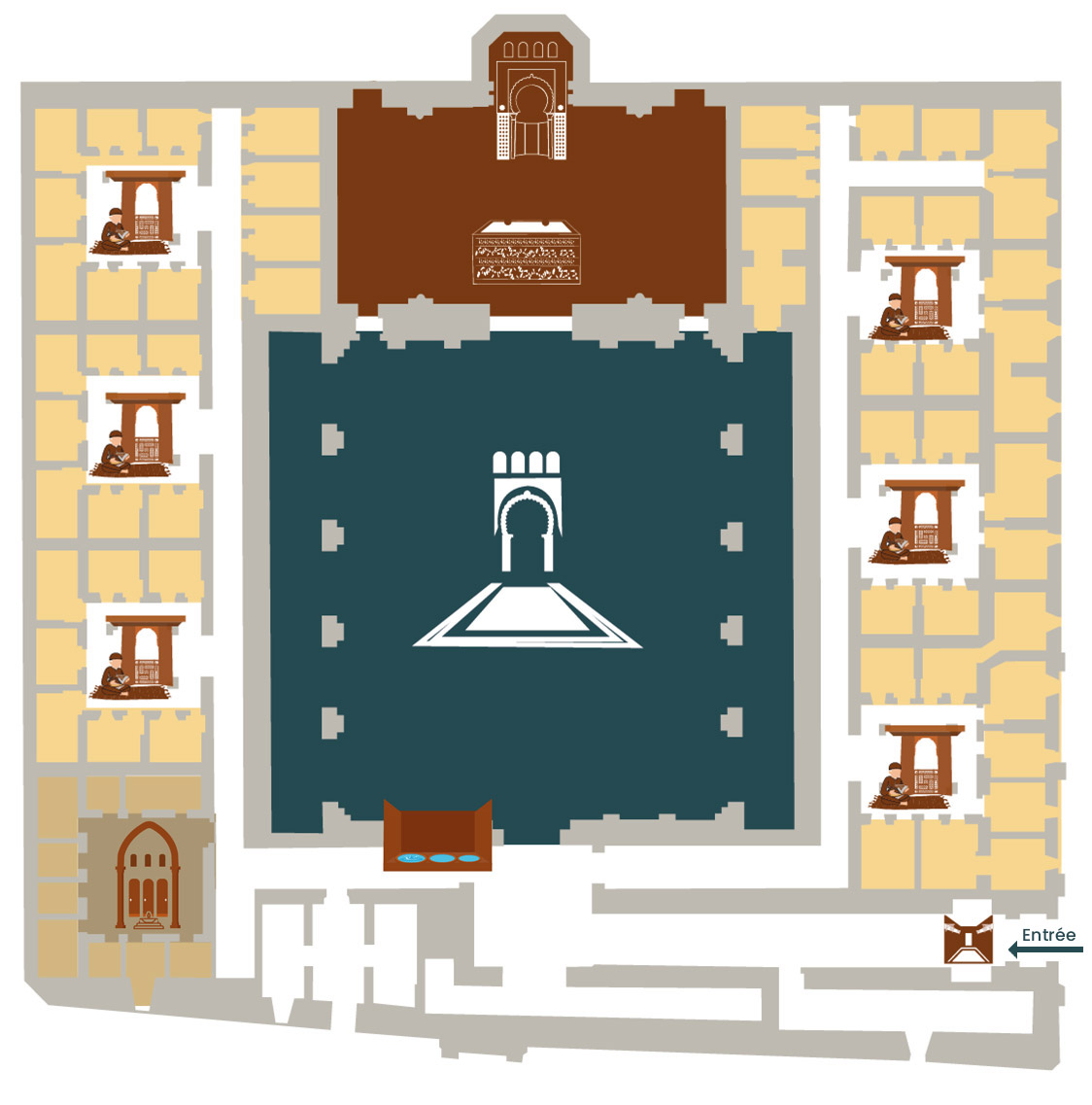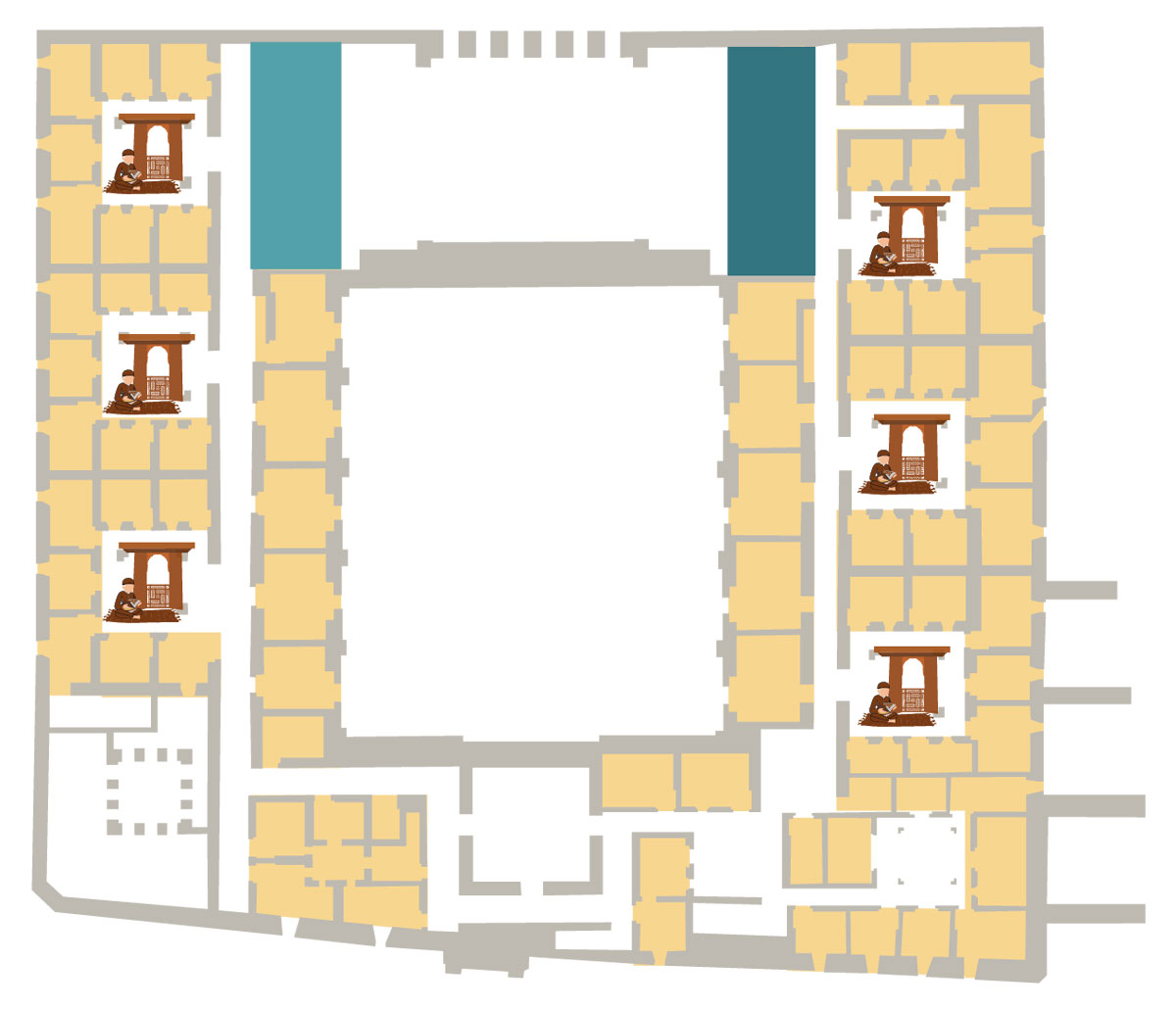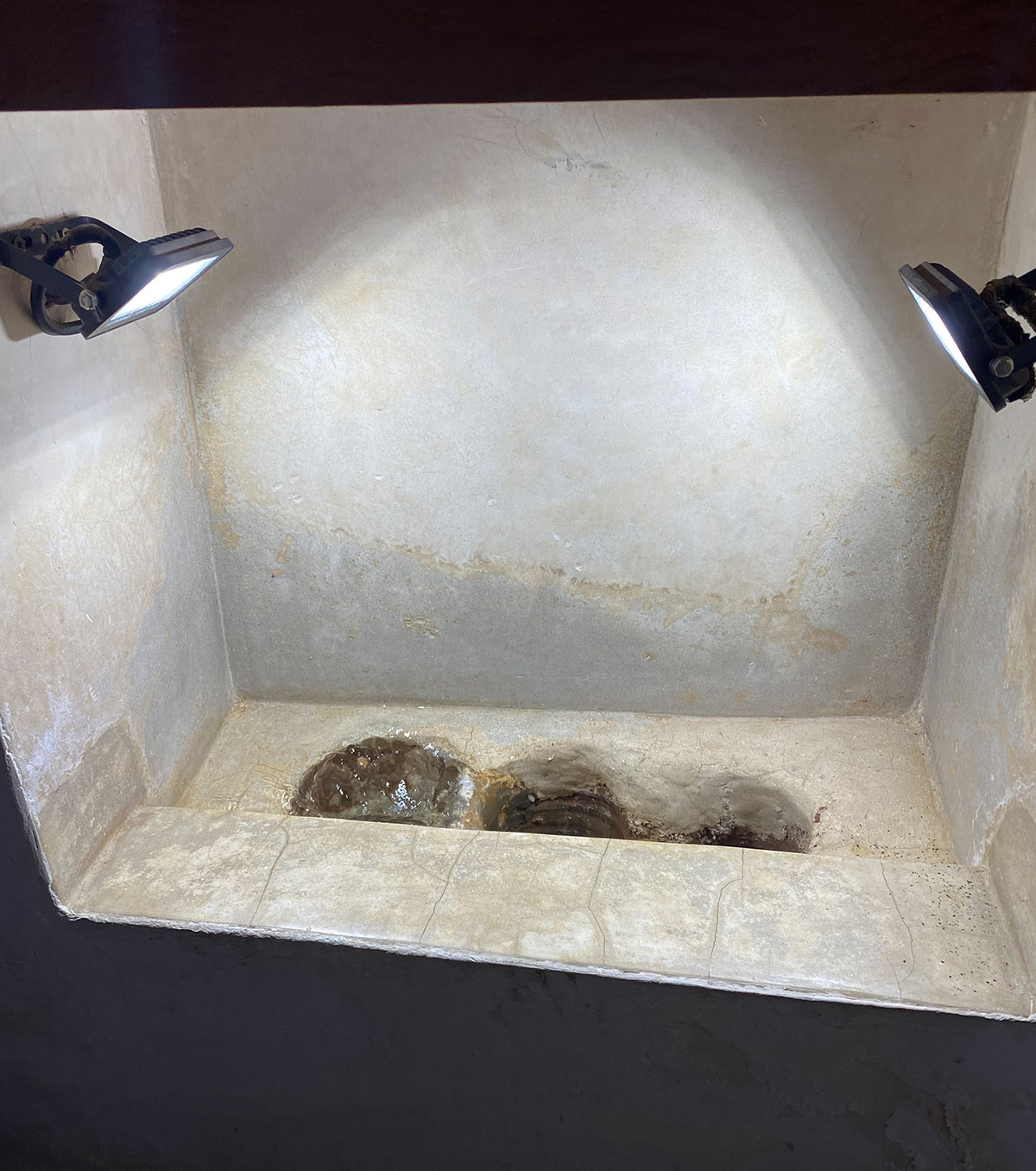-
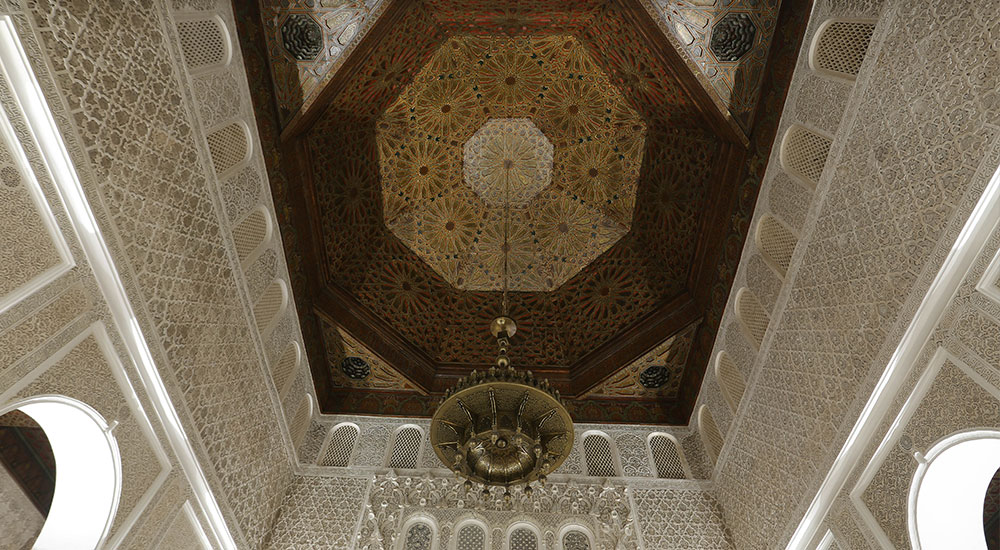
Carved wood
The carved cedar wood is highly prevalent in the Madrasa Ben Youssef, adorned with geometric, floral, and epigraphic motifs such as arabesques, interlacing patterns, and other decorative elements.
Read more CollapseThe artisans who worked on these sculptures demonstrated great skill and mastery of traditional craftsmanship techniques, creating a warm and inviting atmosphere. The ceilings, in turn, not only serve as functional architectural elements but also inspire contemplation and reflection, thus creating an environment conducive to study and meditation within the educational context of the Madrasa.
-
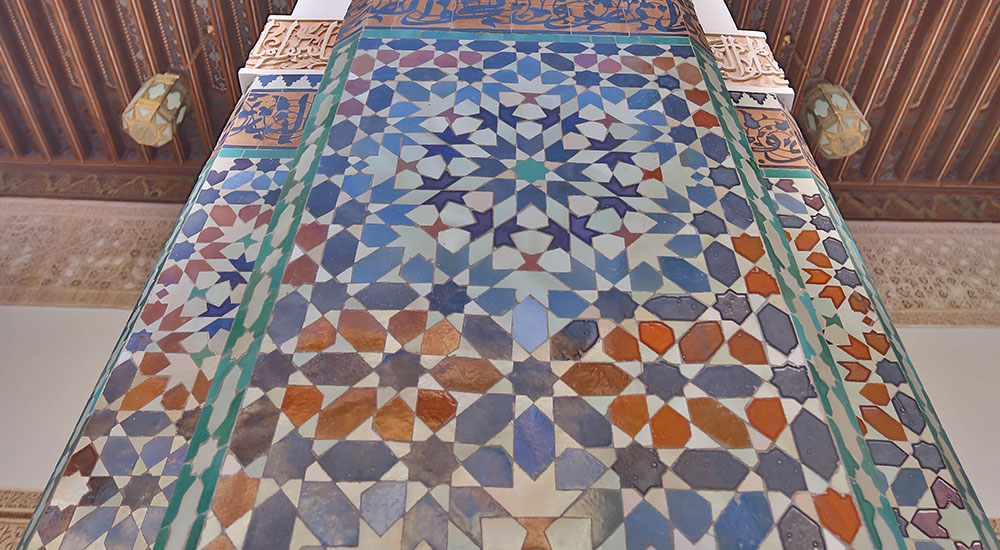
Zellige
In the Madrasa Ben Youssef, zellige is abundantly used to adorn the walls, floors, fountains, columns, and other architectural surfaces..
Read more CollapseThe zellige is a traditional Moroccan art that has continued to evolve with increasingly complex and refined forms and combinations, reflecting the ingenuity of the artisans who have enhanced this medersa, which boasts unparalleled architectural beauty.
The zellige used in the decoration of the medersa has a thickness of 3 cm, double the conventional thickness.
Vibrant colors and contrasts are also distinctive aspects of Moroccan zellige, and this is reflected in the works of the medersa. The artisans who worked on these tiles demonstrated great skill in the precise cutting of shapes and in arranging colors to create visually striking patterns. The zellige in the Madrasa Ben Youssef contributes to the creation of an artistic and spiritual ambiance.
-
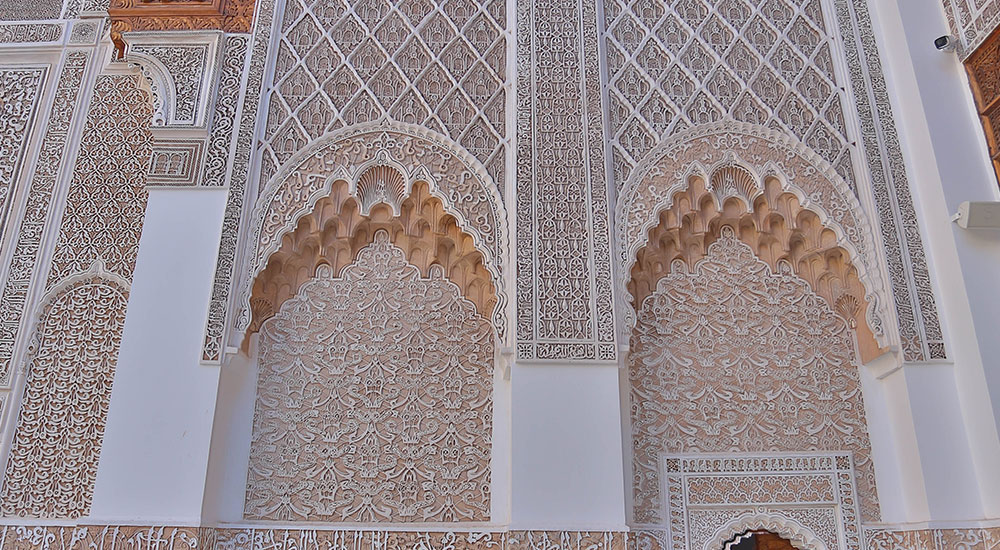
Sculpted plaster
The artisans worked with great precision on the plaster, creating geometric patterns, interlacing designs, arabesques, and calligraphic inscriptions.
Read more CollapseThese motifs are of great delicacy, presenting subtle details and elegant forms.
The plaster sculptures contribute to the overall aesthetics of the medersa, creating an artistic and spiritual ambiance. These decorations are not merely ornamental elements; they also play a role in the symbolism and meaning of the space. The repetitive and symmetrical patterns of the carved plaster often recall geometric themes common in Islamic art, symbolizing order, harmony, and unity.
In summary, the carved plaster in the Madrasa Ben Youssef is a remarkable artistic expression of Moroccan craftsmanship, adding an artistic and spiritual dimension to the overall architecture of this historic building.
-
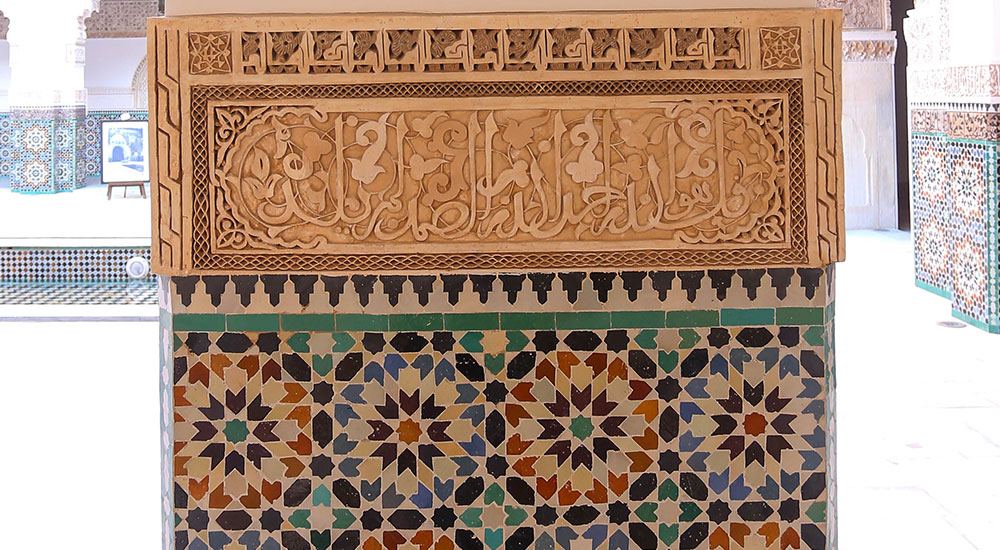
The calligraphy in the Madrasa
Calligraphy plays a significant role in the decoration of the Madrasa Ben Youssef in Marrakech.
Read more CollapseArabic calligraphy is a form of sacred art in the Islamic world, often used to transcribe Quranic verses, poems, proverbs, or other spiritual messages. In the Madrasa Ben Youssef, calligraphy is used in various ways to adorn the walls and architectural elements.
Calligraphic inscriptions in the Madrasa Ben Youssef can take the form of Quranic verses, religious quotes, or Arabic poetry. These writings are typically executed with great artistic mastery, often in the form of elaborate and stylized patterns. The calligraphy may be embedded in carved plaster, integrated into the walls, or presented independently.
Architecture of the Madrasa Ben Youssef
This Madrasa stands out for the harmony of its architecture and the diversity of its construction materials, making it an architectural and artistic gem that reflects the history of authentic Moroccan art.



